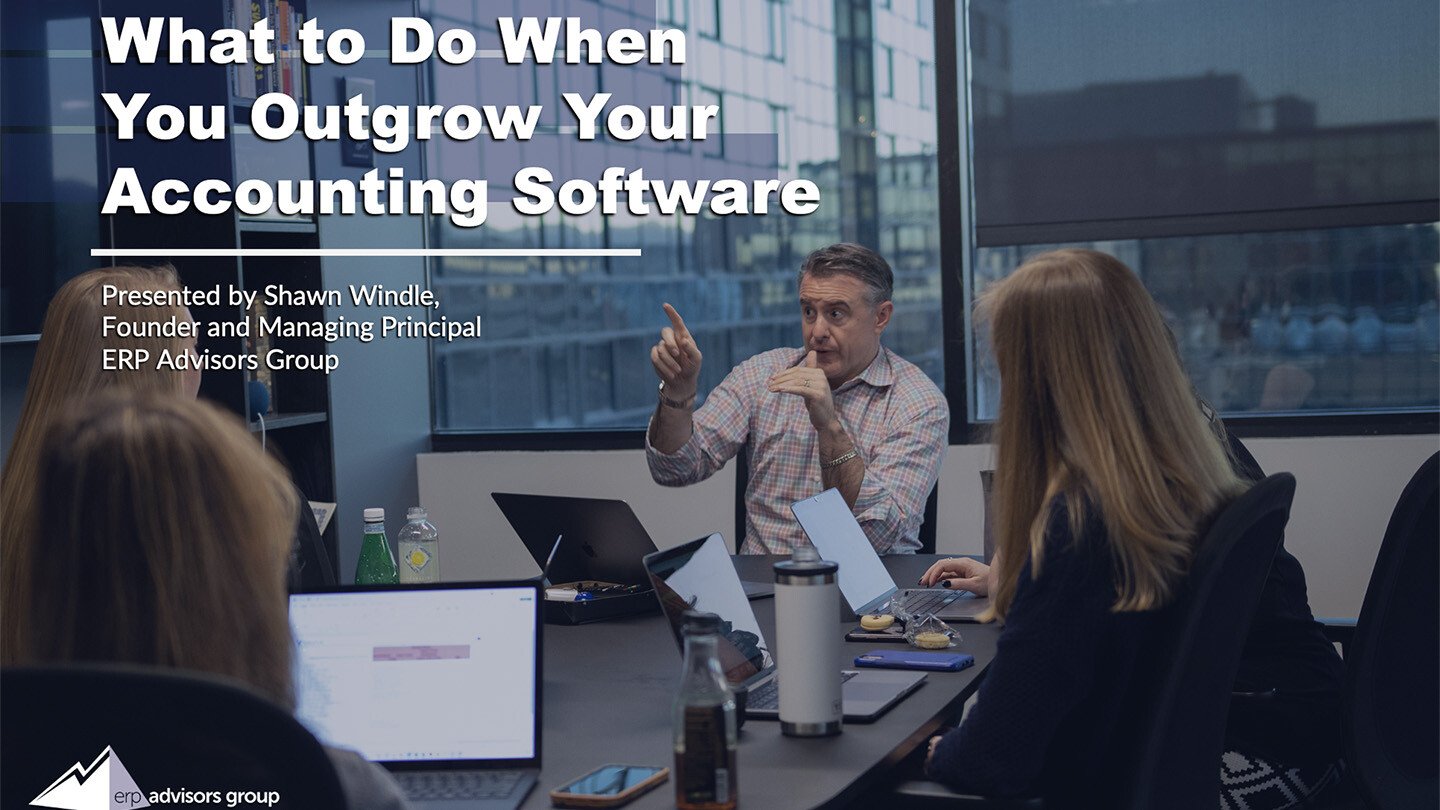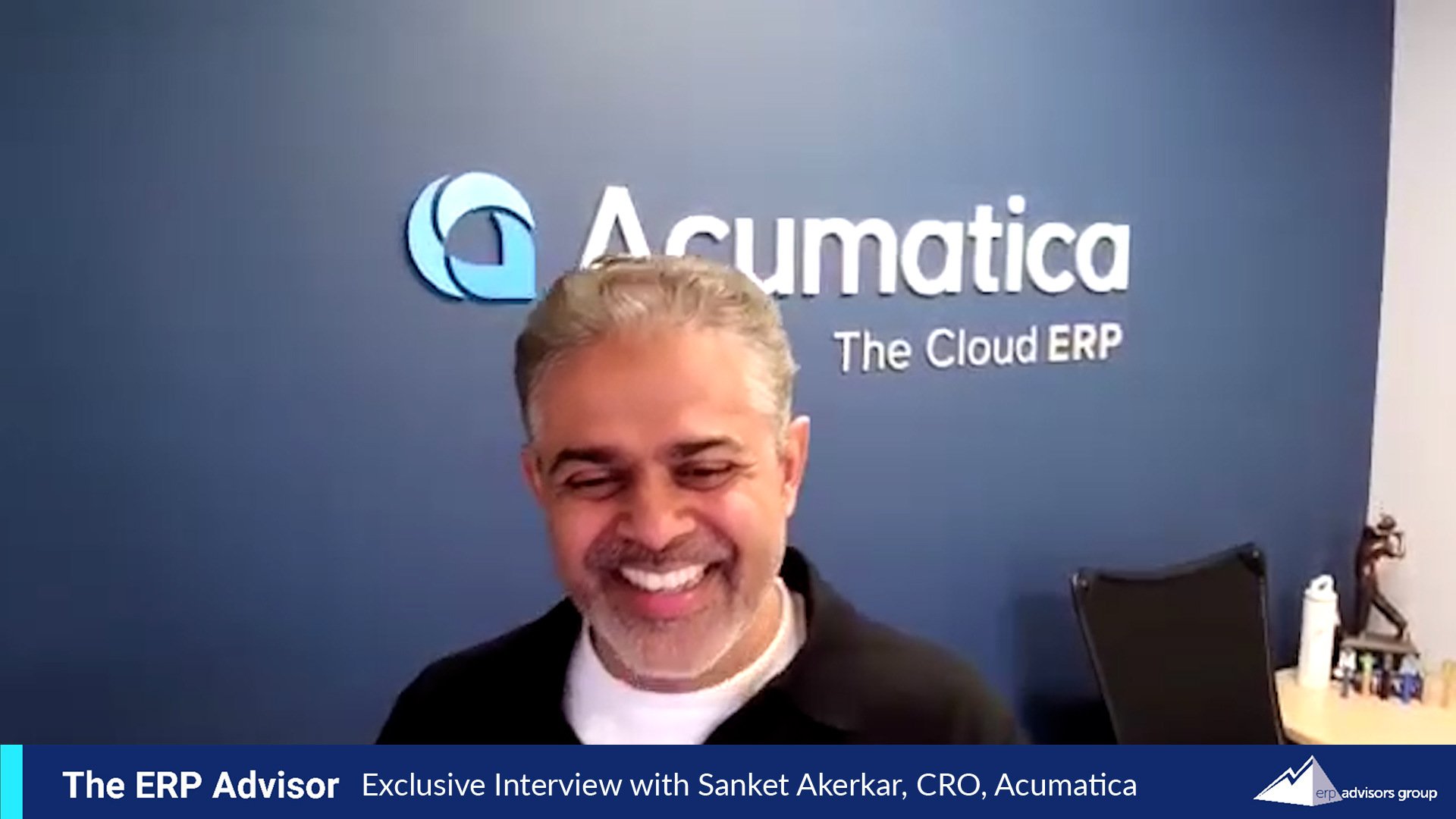 There are many reasons companies implement ERP systems, but one of the biggest ones is to bring all of their systems, from accounting to HR, together into one central solution.
There are many reasons companies implement ERP systems, but one of the biggest ones is to bring all of their systems, from accounting to HR, together into one central solution.
There are many reasons companies implement ERP systems, but one of the biggest ones is to bring all of their systems together into one central solution, all the way from accounting to HR.
This need for change could be driven by various different concerns. Maybe you have outgrown your current software. Maybe your company is dealing with disparate systems that do not work well together. Perhaps your supply chain is inefficient and you need a better handle on inventory management. Maybe all of these things are true.
Whatever your specific needs, Enterprise Resource Planning (ERP) software can help you transform your business as part of a digital transformation. ERP can support your greater effort to add value to and improve your business through advanced technology.
So, when you set out to increase the efficiency of your organization, you will likely find that an ERP system will help you achieve this goal — along with other efforts.
What is Digital Transformation?
CIO.com describes digital transformation as the “application of digital capabilities to processes, products, and assets to improve efficiency, enhance customer value, manage risk, and uncover new monetization opportunities.”
Digital Transformation is not the same thing as Enterprise Resource Planning. ERP is essentially the platform on which the digital transformation initiative is launched.
Digital transformation is reimagining the human experience. It is remaking how people live, work, play, and connect. Everything is being rethought, simplified, and improved — even things people have taken for granted throughout their lives.
An great example of digital transformation is in the retail industry. Years ago, consumers would travel to a physical store, shop for clothes, try them on, and purchase them. These days, retail — like many industries — offers many channels to their customers. We have the ability buy clothes online, try on clothes in a store and later purchase them online, reserve clothes online and pick them up in-person — and that’s just one element of the experience. Buyers can even get personalized recommendations before they ever set foot in a store and pay via their mobile device. Needless to say, this digitally-transformed business model also transforms the customer experience.

Uber’s Digital Transformation Journey
Uber may be the best example of a successful digital transformation. Uber took a long-standing industry and completely reinvented it. The taxi industry has been around practically since cars were invented — even before then, when people purchased or traded for rides on horse-drawn carriages and wagons. Through digital transformation, Uber disrupted the norm and forced the entire industry to evolve to compete with Uber’s ride-sharing technology.
Uber’s offering is not a physical product. Uber sells a technology that exists on your phone, your computer, or your laptop browser.
Today, many cannot imagine traveling or navigating a city without the use of Uber. Uber has completely changed people’s lives. People are fully dependent on this technology, whether that be as a means of transportation or a means of employment.
ERP: A Vital Step Toward Digital Transformation
ERP News explains the role of ERP in an organization’s digital transformation like this: “ERP has a major impact on digital transformation. It has the capability of bringing revolutionary changes in various processes of modern business.”
It’s true. Digital transformation is about changing your organization through significant process improvement by giving your customers, vendors, and stakeholders the greatest flexibility in interacting with your business. ERP software integrates all aspects of your business operations, leading to greater efficiency, speed, and customer satisfaction. Put simply, your ERP software is the platform for your digital transformation.
Without an ERP platform that helps with integrating orders, inventory, accounting, returns, shipping, etc., making the next leap towards transforming your customer’s experience will be impossible. Having a software platform to spring from makes the next steps of transforming how your employees, customers, and vendors more easily interact with newer technology without disrupting your industry or geography.
Digital Transformation Effort Trends
Four Phases of a Digital Transformation
- Clean Your Data
- Standardizing Technology Platforms Across Key Applications
- Look at your customer, employee, and then supplier processes — probably in that order, depending on your business
- Build analytics and insights on top of these processes so you can monitor what's happening in real time
Call ERP Advisors Group
We help individuals go through this process of determining what they need to do with their software, what the benefits of changing are, and then specific apps to go with. And then making sure implementations are a success — that's ultimately what we're all about. We don't let our clients spend a dime without ensuring that it’s going to meet their business goals.
Questions about how an ERP platform can transform your organization and support your digital transformation? Contact ERP Advisors Group at 866-499-8550. We advise businesses every day on how to invest in the right ERP solution to achieve their digital transformation and other goals and can do the same for you.
I'm Shawn Windle with ERP Advisors Group. I've been helping companies and individuals from CFO’s to CIO's, senior executive people to directors of IT, to sometimes other people that get stuck with a big ERP project and they're not sure what to do about it.
We help individuals go through this process of determining what they need to do with their software, what the benefits of changing are, and then specific apps to go with. And then making sure implementations are a success — that's ultimately what we're all about. We don't let our clients spend a dime without ensuring that it’s going to meet their business goals.
So, that's basically what I do. We've got a team of about 14 of us and we work across the world with our projects, mostly North America that we focused in on — and some European based companies, too, and South America.
So, this is a cool topic. Digital transformation in our description says that people want to understand the difference between ERP and digital transformation, and it's not always an “either or” situation. And that's exactly right.
So, what I'm going to do today, here probably in the next 15 minutes, is define what we mean by digital transformation and give you some examples that will make it very clear of what this concept is, and then we'll talk about how ERP plays into this concept of digital transformation, as well as some of the other emerging technology.
And then, what does this practically mean for businesses that are anywhere from early-stage startups to a billion dollars in revenue? And give you some very practical examples, too, of some businesses we've helped through this transformation and end off with a little bit of a pattern of something that you can implement today.
That's a lot, so let me jump into it.
So, when we talk about digital transformation — just a little bit of research that I did — I usually go back to Accenture, that's where I started my career and it's a little marketing hurrah.
But they basically say digital transformation is reimagining the human experience. That it is remaking how people live, work, play, and connect. Everything is being rethought, simplified, and improved — even things people have taken for granted throughout their lives.
So, they're definitely applying at a really broad perspective across cultures.
And if you think about digital transformation, there's one industry that every single person knows about that experienced a major digital transformation that will totally and completely communicate what this means. And it's just one word I have to say which is Uber.
So, Uber and the founders and people that worked at Uber did a complete digital transformation of a very old industry, basically cabs.
And everybody knows the Uber story. There's certainly lots of turmoil now in the news about Uber. But if you look at what they basically did, they took an industry that's been around for probably hundreds of years if you think about it — maybe even longer. People paying for rides from point A to point B, and it could be a horse drawn carriage all the way to a car of course into the taxi industry.
But through the use of digital technologies, Uber was able to take a standardized industry and completely transform it. Like truly transform it to a whole different level.
And I think a lot of the taxi industry is still just reeling from that change, and I don't think they've responded very well to be honest with you.
So, this concept of digital transformation can be extremely disruptive, or it could be an evolutionary step that a business makes.
But when we talk about digital transformation, just think about Uber. The way that people interact and do ridesharing and taxis and car rides and all that is totally different. It's changed people's lives.
I know for me just recently I was on a business trip and was able to do things and accomplished more because of Uber versus renting a car. So, it's not just taxis, it's also transportation in general that's been impacted.
So, when we talk about digital transformation, just use that as a model in your mind.
So how does ERP play into this?
When we talk about enterprise resource planning, it's not an app, it used to be that, but it's not anymore. ERP in our minds is always a conceptual framework for automating processes across an enterprise.
So, when you think about an Uber scenario, there is a back office ERP that runs financials in that. But when you look at an industry that isn't just like literally an Internet-based company — like Uber doesn't really sell anything. You can't go to an Uber store and look at the Uber product. It exists in Internet technology, it exists on your phone, it exists on your computer, your desktop, your laptop in a browser somewhere.
Most businesses are not like that where there is some kind of a component of a physical product, there's a project or there's inventory in that and so, to manage those kinds of more tangible assets if you will, that's where an ERP comes into play.
Frankly, Uber — we haven't worked with Uber — but they probably use an ERP for just financials and that's it. Might just be SAP sitting in the background where they can do multiple company consolidation and multi-currency stuff.
But most of our clients that we work with in that billion dollar and under range all the way, like I said, to very top companies that have no revenue but are funded in a way that they know that technology is imperative and is important.
There's a way to tie together the physical assets, the resources of the enterprise and manage them in a way that can be completely different than it's been done in the past, and really be transformational. And the ERP really serves as the platform for which to build that kind of transformation.
So, I can give you just a couple of examples of firms that went through some pretty major transformations again in terms of their digital assets if you will, from software and I think it'll make sense.
So, we have a client that's in the security integration industry. They are a company that installs security equipment, but what they do much more of is they do a lot more monitoring services and other kinds of recurring services for their clients.
And their business — their technology — was built around a very construction-focused industry of just going in and installing the hardware. That's basically become a commodity. So, they really needed to evolve which they've been able to do, but there's tons of manual interventions on the back end.
Billing was done very manually and so using a cloud-based ERP platform, we're able to put an application in place with a great implementation partner and now they're able to do their more recurring monitoring services and other types of services that the industry is really moving more into in a completely different way. It's not only managed to build more automatically, but they're able to have a more robust relationship with their customer.
One thing you'll learn as you do research on digital transformation is almost every authoritative group or person in the industry will say it always starts with customer transformation, and that's exactly what TSI was looking to do is, how could they make it easier to do business?
And the ERP serves the platform for them to build out different Internet-based apps and mobile technologies and even working with their field services in a different way.
So, in that instance, the ERP is basically the platform for which the digital transformation was launched. And that's what you'll see across most mid-sized businesses.
Like even this next example of a company that's in the data center business where they leveraged, again a cloud-based ERP package, to build out starting with financials and core invoicing and all that stuff. And you start to see a pattern here that I'm going to talk about in a minute, but they started from the inside and then worked their way up, all the way out to as much of the customer facing functions as they could.
But you basically had a platform that they used for financials — and invoicing as I said — and payables which was less critical for them. Fixed assets is super vital because they have a lot of fixed assets, real estate and machines and that.
But then they use the platform to start building out very custom solutions for managing their services and they actually offered some next generation services as well that they're able to build application and to help do some really innovative things that their customers could come to them and very quickly get the services that they needed. Whereas it took some days to actually go into a data center and do some inventory to see if these things were available or not.
Well, these guys were able to provide their customers quotes based on actual availability within minutes.
So, the digital transformation for this organization again mostly focused on the customer experience, was extremely significant, and they had built out a platform then that they could bring out to other physical assets, other data centers and it really was a competitive differentiation for them.
So again, when we think about our role in the market, we're not, very honestly, we're not the big strategy guys. I used to do that years ago and loved it, but I would always think, well now how are we going to actually implement what I just said we needed to do?
ERP Advisors Group, we’re very pragmatic with anything we're recommending. We're thinking with, okay, how are we really going to put this into play?
And so, I think those two examples give you an example or give you a good feel for how everyday organizations, companies, nonprofits, even government municipalities can leverage an ERP platform to build out either custom functions or even use the tools and the modules that are built within these ERP to transform how they're doing business with their customers.
Let me give you one last example actually. We were able again to use a cloud-based ERP as a platform to do all kinds of automation that was really just a dream for three or four of their departments and how they could interact with their public better and add more value and even reduce the cost of business and interaction with these customers.
That really, as an example of digital transformation, is probably the best example I can think of that we've been a part of where we took extremely manual processes where basically customers are sending in checks to the city, and the city had to process those checks and then make sure that there were some other physical things that were happening, too.
We basically automated that entire process for them, so — and it's a model that we're talking to other cities about as well, so kind of transforming that from there.
So, the last thing — hopefully that's good, I hope those are good practical, pragmatic examples.
We can definitely talk in more detail about that just one-on-one if you want to do that here, just give us a call through our website or that.
But the last thing I want to leave you with is the pattern that I have seen that emerges in these quote unquote “digital transformation efforts.” I think it's actually a good, regimented pattern for any organization — call it digital transformation or just process improvement or business performance improvement or whatever that quality increase and capability project is, the pattern that we have seen from very pragmatic work is broken up into four phases.
The first one is you've got to get all your existing apps and data up to snuff. That's the very technical term.
So, if your business has evolved and you have new currencies and you're manually putting those currencies, doing the translation — that's got to be in an application.
If you have customer data that's a mess — lot of clients do — you have to get that cleaned up.
If your item list is a wreck — we had a client recently that had 13 major different functions or different operations within the business and each one had built out their own item list even though they all basically sold the same thing. It was a ton of work to get all that cleaned up so you have to get your house in order — you have to get your apps and data up to snuff first.
Then you have to look at standardizing the technology platforms across all the key apps. And that may be done either through rolling out a single platform solution, but more than likely now it actually based off of being able to integrate all these applications so that they can talk to each other.
So, if you have Salesforce and ServiceNow and Workday and NetSuite — best-of-breed applications for different areas — how do you make those — do you have to have a single platform? Absolutely not, but you can build integrations amongst these apps so that correct data is flowing back and forth so that you can have end-to-end business processes automated and there's not some kind of step in between the apps that you have to work on manually. So, that's the second step.
Then the third step is to look at your customer, employee, and then supplier processes — probably in that order, depending on your business.
If you're a wholesale distributor, that supplier relationship is just as important, if not more frankly, than the customer relationship. So, depending on the industry, you want to look at those three factors. But look at your customer, employee, supplier processes and that's where this this point of cleverness — if you think back to Uber — comes in.
How can we interact with these three different publics if you will, in ways that they really want and need the interaction?
So, even on the employee side — if you think about the employee lifecycle all the way from recruiting and onboarding to offboarding, I'm sure there's apps like Workday and Ultimate and SyncHR that are out there, but really look at it from — especially for organizations that are really employee-centric like services firms — what kind of tools and what kind of an experience are they looking for to automate and reimagine the way that they're doing what they're doing today.
Same thing with customers. And it's not just multi-channel retail or wholesale strategies — we've talked about that in other calls — it's putting out tools and apps that sit on the customer’s phone that they can interact with you better.
And the same thing with vendors. It used to just be, hey, let's EDI this and get data directly from them and do electronic business transactions. Maybe there's more; there's portals where they can view into your availability and your items and where your inventory is at, and then they can just send you orders in real time based on what you need. There's lots of different options there.
So, then the fourth level really is what I think everybody really wants.
It's the goodies of all this. It’s the analytics and insights that you're looking for across the business so that as an executive you can make better decisions about what's happening in real time across the organization.
So, those are really the four steps — get your house in order with getting your apps and data up to snuff, standardize the technology platforms including integration so that all of your key apps can talk to each other, then really focus on customer, employee, and supplier processes and look for really clever ideas on how to provide them more of what they want, and then finally building analytics and insights on top of these processes so you can monitor what's happening in real time.
Look, of course, for exceptions and even push out reporting and analytics to keep people so that they're actually receiving the information and can do their job better because they have real data.






